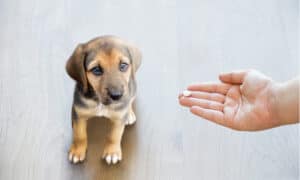Everyone wants to understand their furry friend on a deeper level. Dogs have interesting forms of body language, and some of them definitely leave room for interpretation. Made popular by several internet memes, many people have begun to notice the phenomenon of their dog giving “side-eye” to them. While it is definitely a cute photo op, as it is a distinctly human-like face that can get a few chuckles, it is important to recognize whether or not it’s indicative of something deeper.
In this article, we’re going to explain the technical term for this funny face and give you a list of four reasons why your dog is making it. Some are simple indicators that your dog wants something specific from you, but others are reflective of deeper issues that are well worth addressing. To find out the meaning behind your dog giving side-eye, and some tips on managing the underlying behavior, read on.
What Is “Side-Eye,” Really?

The technical term for a dog giving side-eye is actually “whale eye.”
©MDV Edwards/Shutterstock.com
The first thing that is important to learn is that the phenomenon of dogs apparently giving their owners the side-eye is not something new. It is a form of body language that trainers refer to as whale eye. Essentially, it is when a dog moves its head away from something, but its eyes remain fixated on the other object. When this happens, the whites of the dog’s eyes (known as the sclera) are exposed.
When whale eye happens, it can also seem as though your dog’s eyes have gotten bigger, or that they’re slightly bulging. Sometimes whale eye is also referred to as half-moon eye because of the crescent-like shape that forms around the iris. For some breeds, whale eye is easily detectable. For others, especially breeds of dog susceptible to Brachycephalic Syndrome like bulldogs and pugs, it’s more difficult to take notice.
The most important thing is to determine what is causing this behavior in your dog. If it is due to a negative feeling, it’s your responsibility to get to the bottom of whatever is causing these emotions. As you’ll see below, not all of the reasons for dogs giving side-eye are negative. In fact, sometimes it can be a simple indicator for play. But, you shouldn’t immediately rule out that your dog is experiencing discomfort. To find out exactly what it is that’s causing whale eye, let us run through the five reasons below.
1. Anxiety
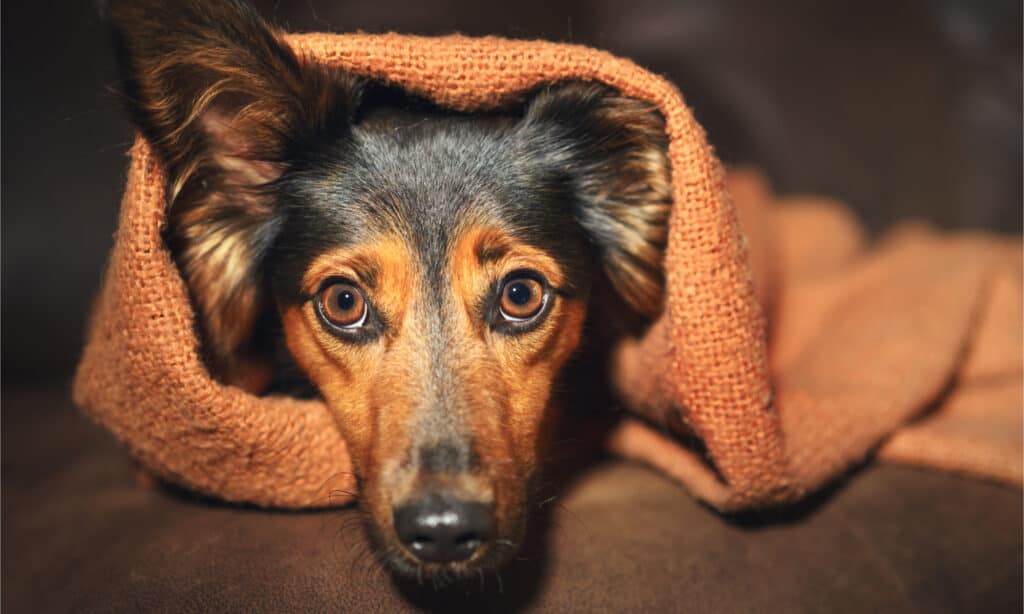
The most common reason for a dog to be displaying whale eye is that it’s feeling anxious.
©Lindsay Helms/Shutterstock.com
The first, and unfortunately most common, reason that your dog is giving you side-eye is that it is feeling particularly anxious. This stems from feelings of uncertainty about the environment that they’re in. Whale eye allows them to move their face away from what they deem as a potential threat without actually having to take their eyes off of it. This perceived threat can be anything from a new person in the home to the quite sinister vacuum cleaner.
Dogs are creatures of habit, and anything that is disruptive of their standard routine can be very upsetting for them. Here are a few other indicators that your dog is feeling anxious:
- Licking their lips
- Excessive yawning
- Ears pointed straight up
- Stiff tail and body
- Tight lips
Tips To Help Manage This
No one wants their dog, or any pet, to feel uncomfortable in their own home. There are a few tips that can help to curtail the anxiety that your dog might be feeling. One way is to make sure that when you introduce them to new objects or people, it is done slowly. Don’t have forceful introductions, and make sure to give them lots of positive reinforcement for their bravery.
Another solution is to make sure that your dog has a special, safe space to go to when they begin to feel overwhelmed. This can be anything from a specific room in the home to a crate or dog bed. If the anxiety that your dog is facing becomes too overwhelming for them, consider getting a professional involved. There are plenty of animal behavioralists with expertise in anxious pets, so you can find the perfect solution for your specific household.
2. Possessiveness
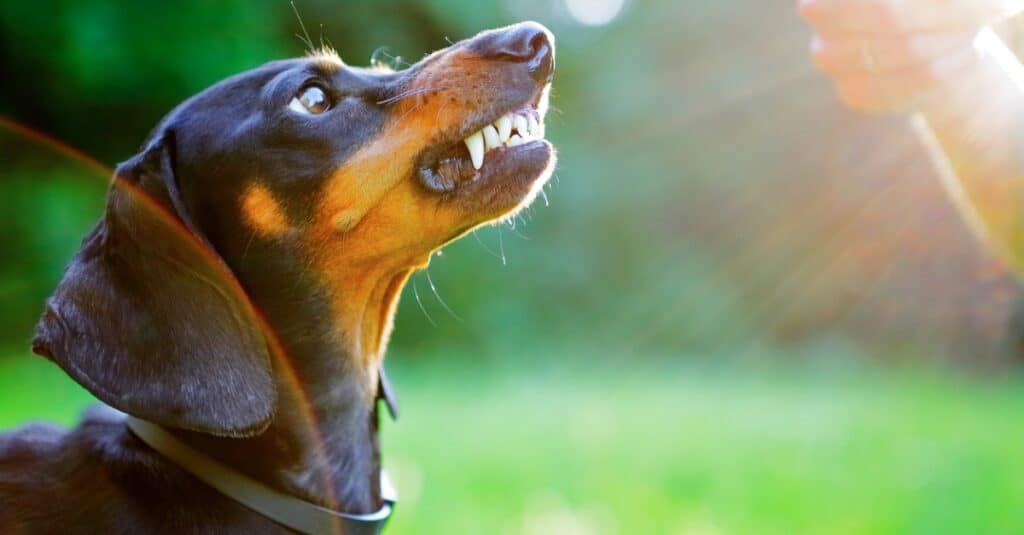
If your dog is feeling possessive, they might be giving you whale eye to let you know not to touch their stuff!
©iStock.com/alexandrshevchenko
The second reason you might be seeing your dog giving side-eye, especially toward humans and other pets, is that they’re feeling possessive. It’s no secret that dogs can be territorial creatures, and even if this is not the reality, they can often feel as though their prized possessions are under threat.
When whale eye is displayed in this scenario, it’s often pretty easy to recognize. It can be a pretty clear message that your dog is saying “This is mine, and I’m watching you.” Usually, they do this to try and communicate their feelings without resorting to other, more aggressive behaviors like growling and snapping. While getting the side-eye is definitely preferable to those, it still isn’t a good feeling to know that your dog is mistrusting of you.
Tips to Help Manage This
The first, and most important, thing to do is try at all costs to avoid a confrontation. Trying to abruptly take the item they’re holding or challenging them in some way might only do harm and escalate the situation in a way that isn’t necessary.
If the item they’re protecting is one that they aren’t supposed to have, you can always use the trading method. Offer them a treat or another valued thing in exchange for what they’re guarding. This can teach them that giving up their valued resource can result in even better rewards, not punishment. Generally speaking, positive reinforcement is the way to go in these situations.
If possible, it is very valuable to train your dog with the “leave it,” or “drop it,” commands. However, if resource guarding becomes a consistent issue or if it escalates to more aggressive behavior, it’s a good idea to consult with a professional dog behaviorist. All dogs are different, and a catered strategy could be very beneficial.
3. Curiosity
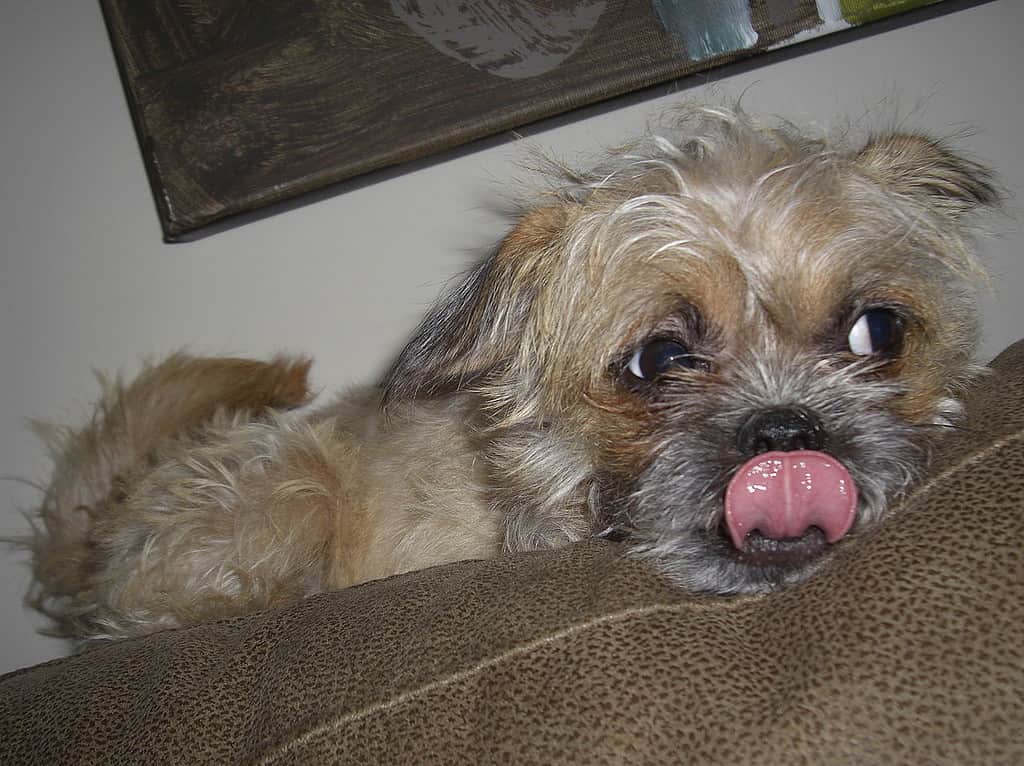
It’s easy for your dog to get distracted, and this could be the simple answer to their side-eye.
©Rachelegreen / CC BY-SA 3.0, Wikimedia Commons – License
The reasons that your dog is giving side-eye don’t always have to be negative ones. Truthfully, dogs are very easily distracted. Whether it’s a sound that catches their attention or a particularly interesting scent, it’s very easy for their minds to get pulled into multiple directions. Rather than a form of distress, you could witness your dog giving whale eye as a form of sheer curiosity. It is, in a sense, just their way of multitasking in a world that is full of stimuli.
Tips to Help Manage This
This sort of behavior isn’t necessarily one that is bad or needs to be corrected- but it could be beneficial to learn how to get your pup’s fullest attention. Teaching your dog commands like “watch,” or “look at me,” can be very helpful if you need to let them know something and don’t want to run the risk of them becoming distracted. These commands aren’t too difficult for them to learn, especially if you remember to give them plenty of positive reinforcement.
If you notice that this happens frequently, and it appears that your dog is overstimulated, try to give them some form of reprieve from all of the things happening in their vicinity. You can also try to introduce toys that are built specifically to engage their mind. Tools like these can help them channel their curiosity in constructive ways.
4. Playfulness
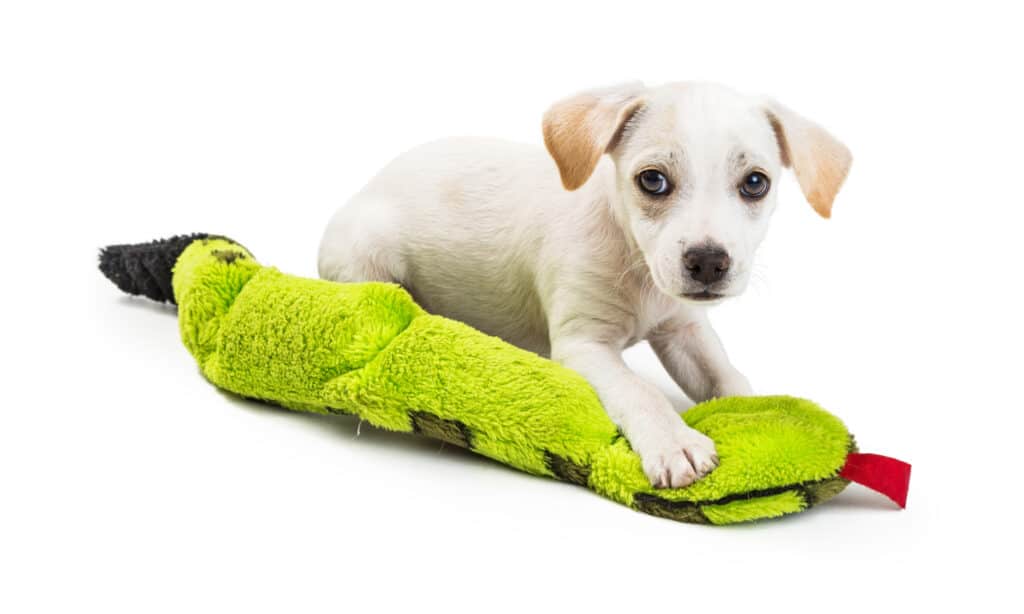
Your dog might be side-eyeing you as an open invitation to come and play with them!
©GoodFocused/Shutterstock.com
Sometimes, dogs giving side-eye can have nothing to do with anxiety or curiosity. It can simply be your pup’s own cheeky way of engaging with you! When paired with a wagging tail and playful stance, this whale eye can just represent teasing and an invitation for you to join in on the fun.
To harness this energy, make sure that you give them the attention they’re looking for. Dogs love your companionship and could take offense if you don’t reciprocate their offers to come and play. Use this time to deepen the bond you have with your precious pooch! Even better, try to incorporate commands to use the playtime as secret training time. (But, don’t tell your dog I told you that little trick!)
The photo featured at the top of this post is © Konstantin Zaykov/Shutterstock.com
Thank you for reading! Have some feedback for us? Contact the AZ Animals editorial team.



